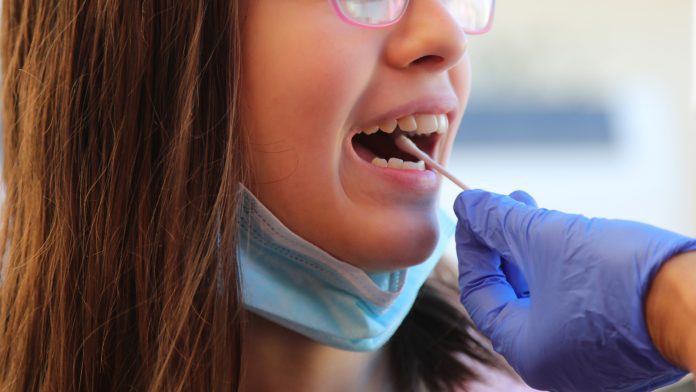
Daily close contact testing in secondary schools was as successful at preventing COVID-19 transmission as the current ten-day isolation policy, new research has found.
In a study sponsored by the Department of Health and Social Care, researchers at the University of Oxford found that COVID testing high school students who had been in contact with an infected person was just as effective in controlling the spread of the infection than the current ten-day close contact isolation policy enforced in the UK.
The independent study, supported by the Department for Education and Office for National Statistics, split 201 secondary schools and colleges of further education into two randomised groups. Over 200,000 students and 20,000 staff participated in the study. Following close contacts of positive cases, one half of participants continued a standard policy of isolation for ten days, coupled with general routine mass testing. The close contact participants in the second group were invited to still attend school and take lateral flow tests in a supervised school testing site over seven days. Those who chose to do so were released from isolation to attend school or college if they tested negative for COVID-19. Around half of all eligible students and staff chose to do daily testing. Close contacts, from either group of the study, were invited to provide a research PCR test for COVID-19 on day two and seven following contact, to determine how many close contacts became infected.
The research PCRs used in the study showed that 44/2981 (1.5%) of the contacts attending school in the intervention group tested positive or indeterminate for COVID-19, compared to 14/886 (1.6%) of the control students and staff staying at home.
There was no evidence that the rate of students and staff developing COVID-19 with symptoms was different in the group doing daily testing compared to the contact group isolating at home. As with all studies, the researchers determined a range of plausible values for the impact of the intervention. At the rates of COVID-19 seen during the study, it was found that daily contact testing (DCT) may reduce the rate of COVID-19 cases in schools by around one case a month per school of 1000 students, to a maximum possible increase of transmission by one case per month in a school of 1000 students. However, the most likely outcome was that there would be no overall change.
In the control group, 1.8% of available student school days were lost due to COVID-19, some of which were due to contacts outside of school. As expected, daily testing, rather than isolation of contacts, can reduce absences. Where school-based contacts take part in DCT, the best estimate was that this can reduce COVID-related school absences by 39%.
No major difference between testing and isolating
Tim Peto, Professor of Medicine at the University of Oxford and Principal Investigator on the study, said: “Our findings indicate that there is no significant difference in COVID-19 transmission between schools where bubbles were sent into home isolation versus those where daily contact testing was implemented instead. Infection rates in the close contacts were low in general, and there was little difference between those who went to school following a negative lateral flow test and those who were isolating at home.”
Bernadette Young, Clinical Lecturer in Infectious Diseases at the University of Oxford, and an investigator on the study, said: “When DCT is used in schools, our best estimate is that transmission is slightly reduced compared to a policy of isolating contacts, though there is uncertainty around this. We are now doing whole genome sequencing of the viruses to understand whether cases in the study were related to each other, which will help us understand transmission in secondary schools and colleges.”
David Eyre, Associate Professor at the University of Oxford and an investigator on the study, said: “The findings of this study are good news for students, parents, and teachers. The study supports earlier findings from Test and Trace data showing that most children who are in contact with COVID-19 in schools don’t go on to get infected. Daily testing was able to identify most of the small number that do, which allowed them to safely isolate at home, while allowing the large majority of other students and staff to remain in school. Reassuringly too, rates of infection in school staff were lower than those in students.”
Safe alternatives to isolation
Susan Hopkins, Chief Medical Adviser for NHS Test and Trace, said: “This is a major breakthrough, showing that daily contact testing can keep young people in classrooms instead of making them isolate at home.
“We’ve been trying to find safe alternatives, and this study gives us evidence of safe alternatives to isolation for school contacts. So far, self-isolation has been one of the most effective tools at our disposal against COVID-19 – stopping isolated cases from becoming major outbreaks. To have another potential tool like this is great news.”
























